Sustainable Health 2023 Progress
MSU’s basic and translational research play a critical role in addressing acute and long-term health issues. After steady growth of 32% between FY2018 and FY2021, National Institutes of Health and Centers for Disease Control and Prevention research expenditures declined slightly from FY2021 to FY2022 as the height of the COVID-19 pandemic severely hindered purchasing equipment and supplies, hiring and research operations. Notably, NIH and CDC research expenditures for FY2023 are on track to exceed $100 million, a return to previous growth trends.
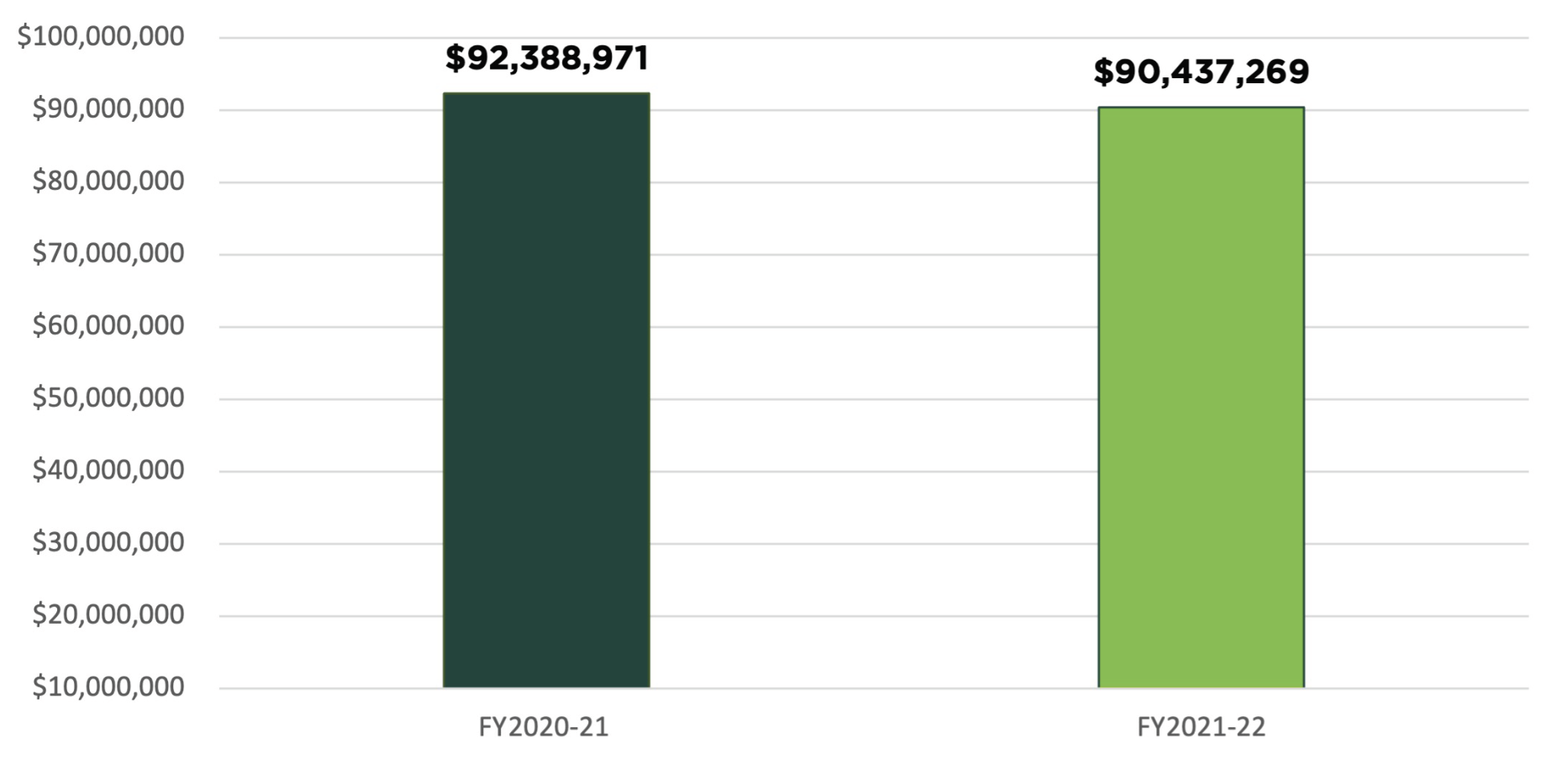
MSU provides opportunity for individuals from all backgrounds and communities and helps address disparities in health care by advancing the diversity of health service providers. Total students of color enrolled increased by 10.2% from the previous year across all three human health colleges.
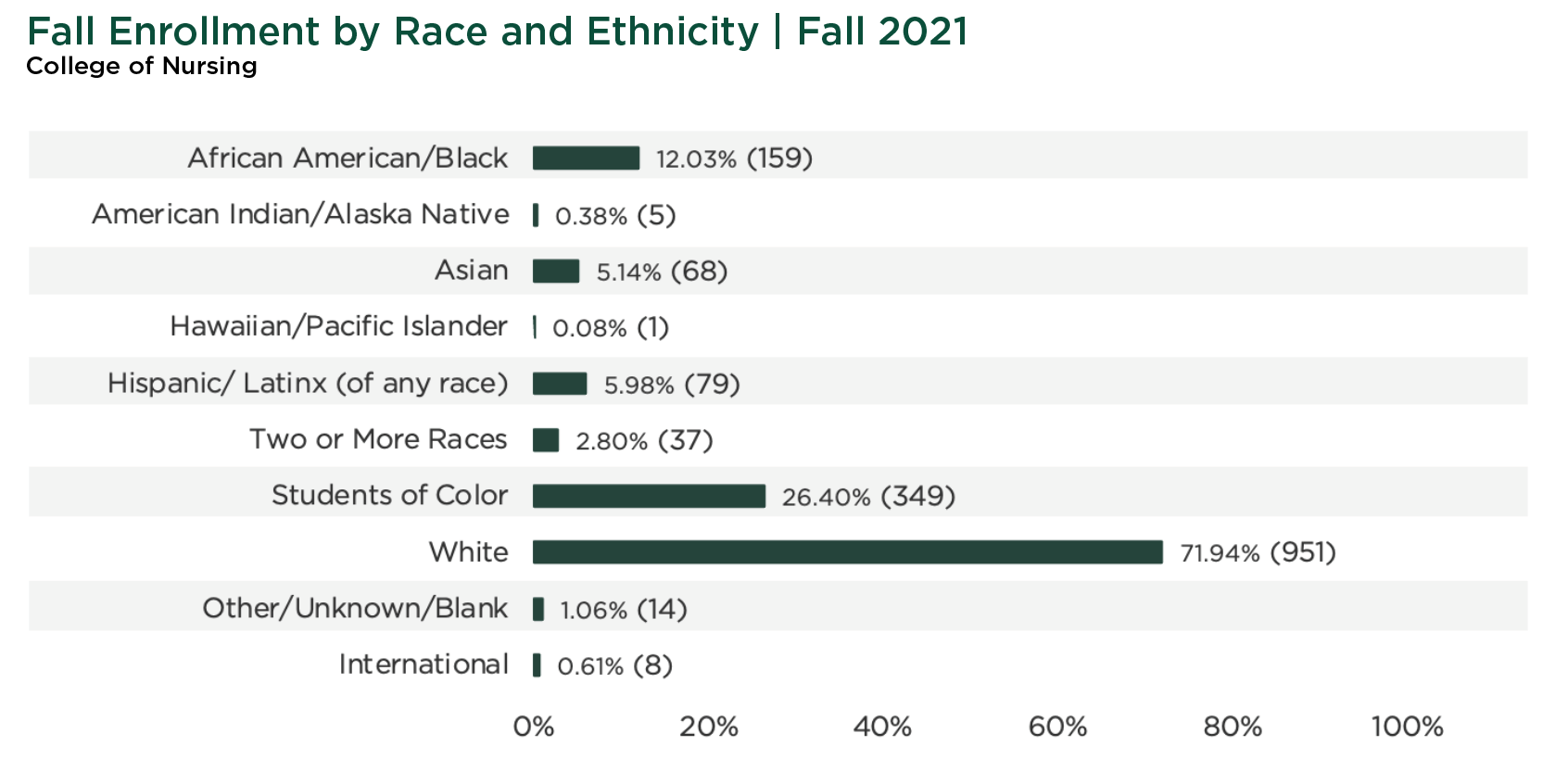

MSU provides opportunity for individuals from all backgrounds and communities and helps address disparities in health care by advancing the diversity of health service providers. Total students of color enrolled increased by 10.2% from the previous year across all three human health colleges.
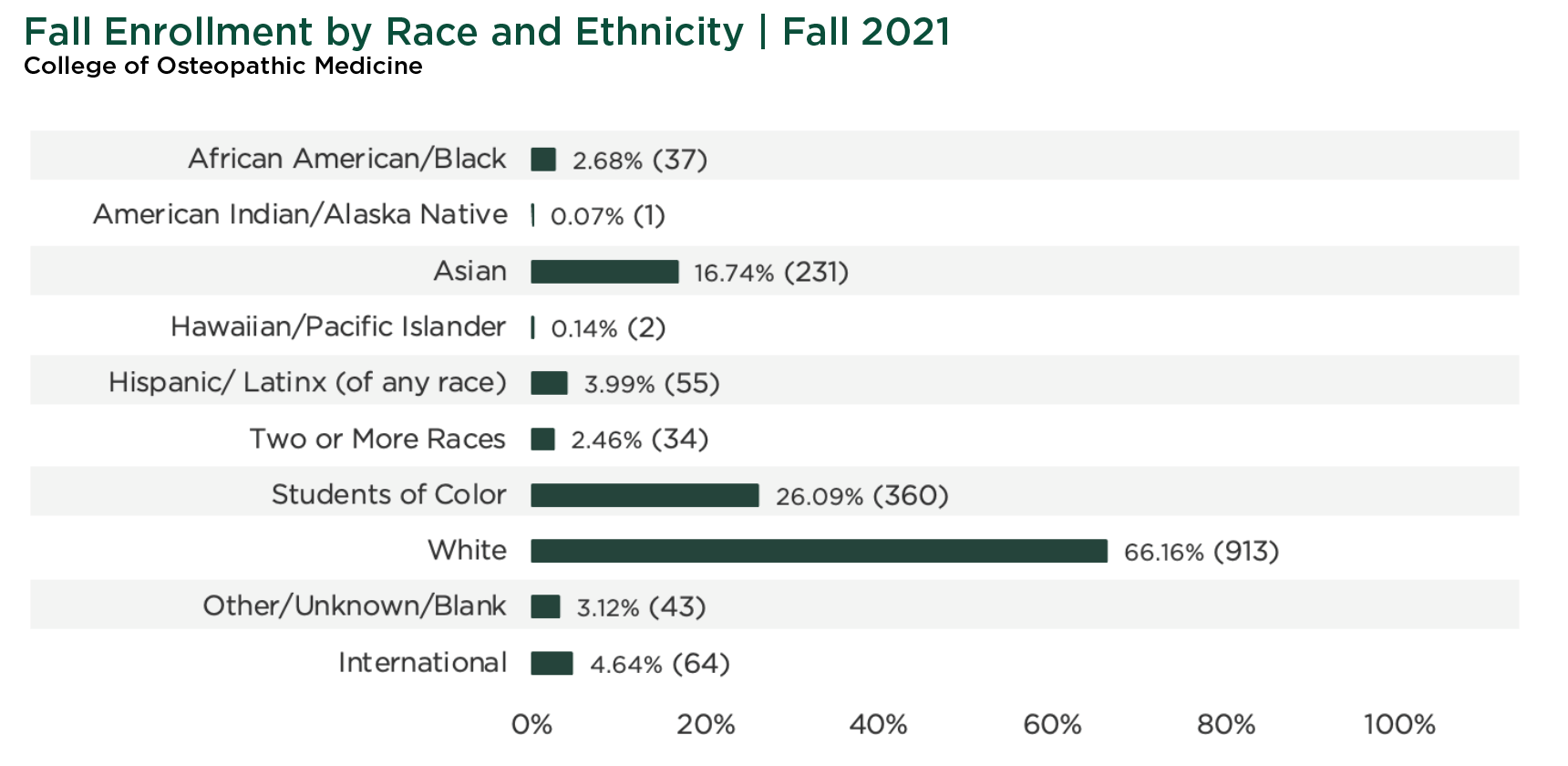

MSU provides opportunity for individuals from all backgrounds and communities and helps address disparities in health care by advancing the diversity of health service providers. Total students of color enrolled increased by 10.2% from the previous year across all three human health colleges.
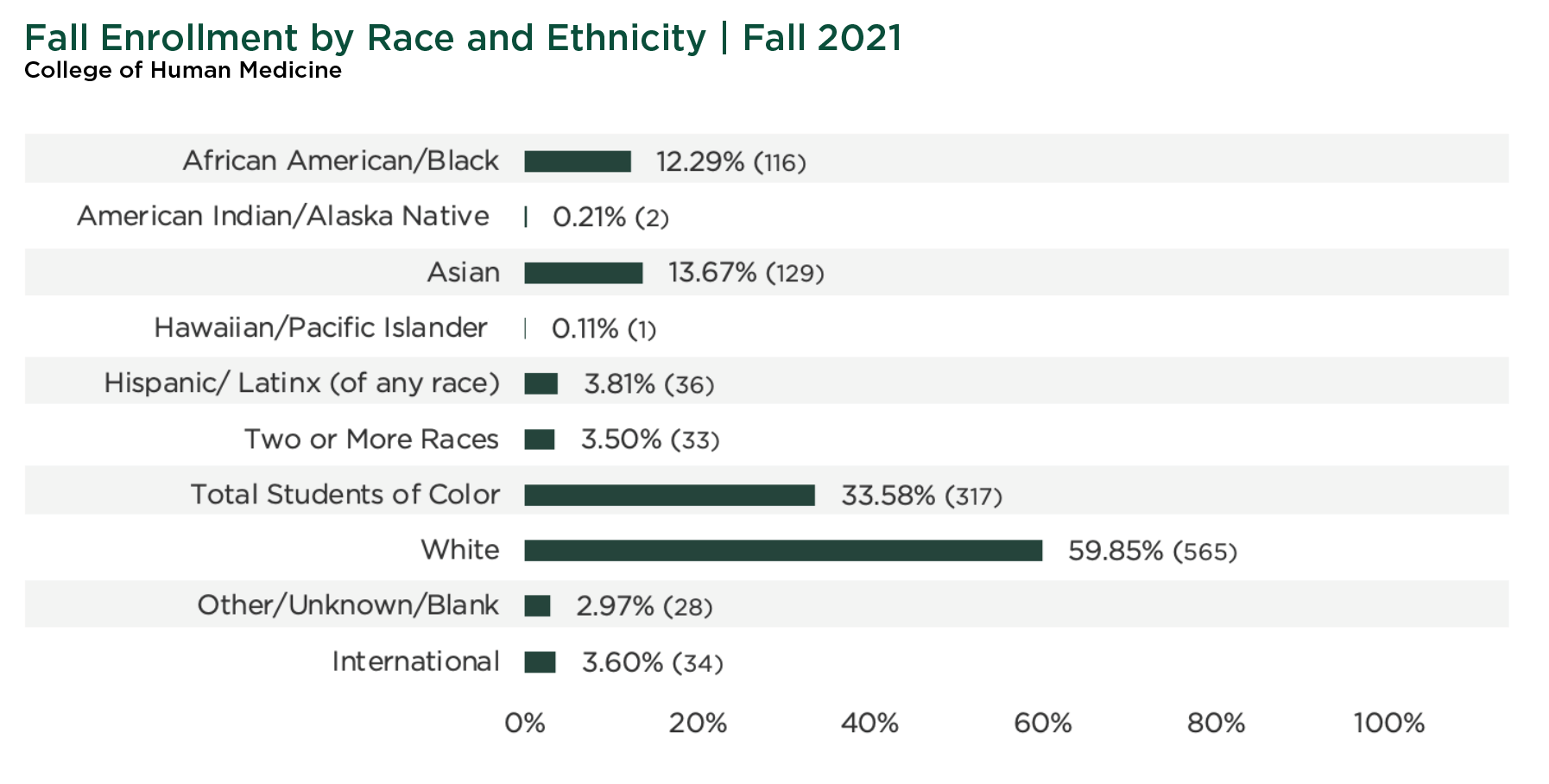
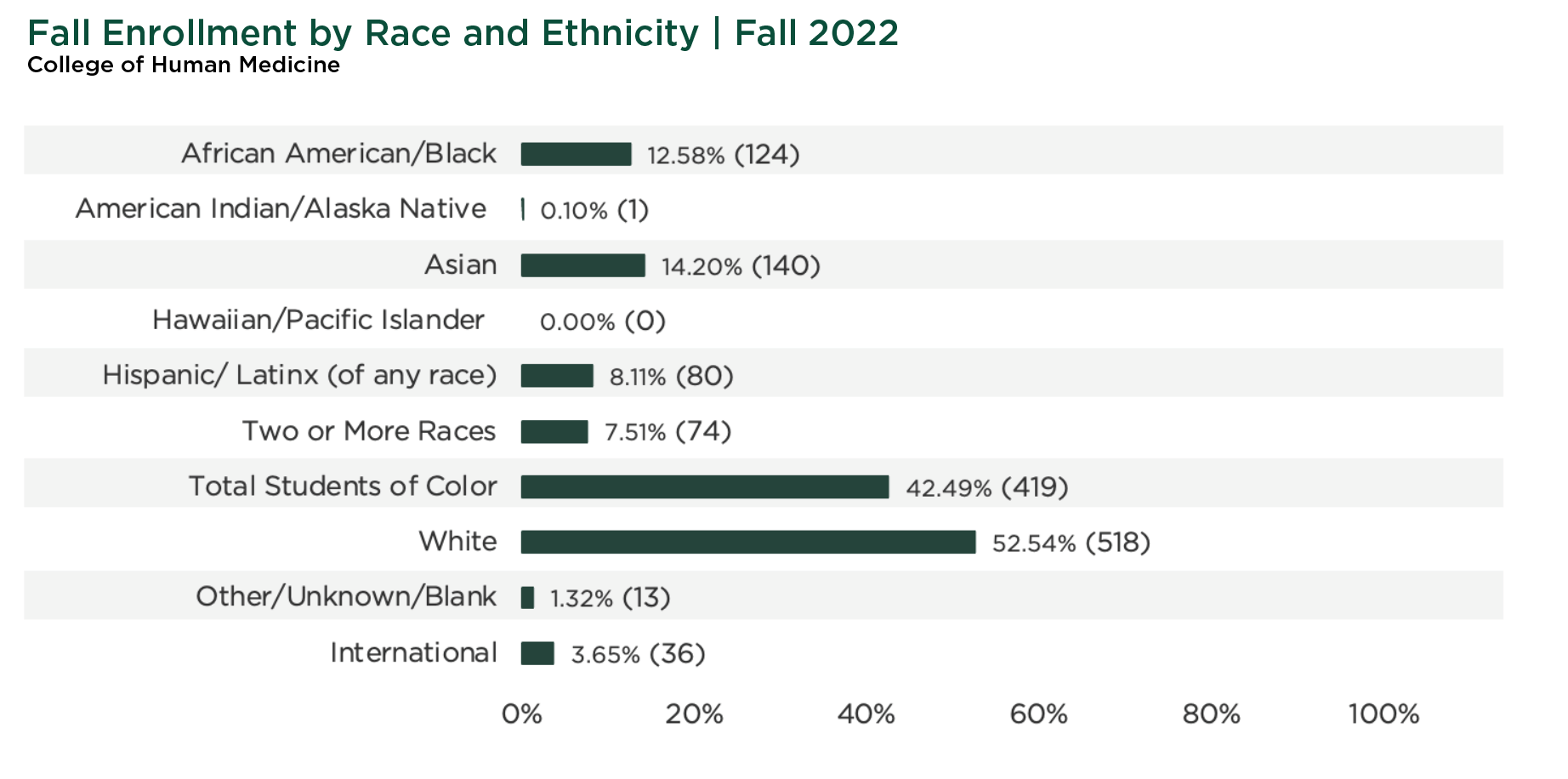
Henry Ford Health + MSU Health Sciences is fueling innovation and discovery through an academically and clinically integrated network of health care providers, scientists, academics and public health practitioners.

 MSU is investing in Detroit through the Henry Ford Health + MSU Health Sciences partnership planning for a new, state-of-the-art research facility. This new facility will expand research in cancer and health disparities, fueling innovation and discovery through traditional and novel approaches by integrating teams of doctors, nurses, scientists, academics and public health practitioners. It will help create an innovation district in Detroit that brings together industry, community and academia to spur economic uplift and opportunity. In addition, the number of MSU medical students has expanded across all Henry Ford Health sites — 18 student slots at College of Human Medicine’s new Detroit campus and 20 new slots for College of Osteopathic medicine students. MSU’s accelerated Bachelor of Science in nursing program is expected to double its size in the coming year.
MSU is investing in Detroit through the Henry Ford Health + MSU Health Sciences partnership planning for a new, state-of-the-art research facility. This new facility will expand research in cancer and health disparities, fueling innovation and discovery through traditional and novel approaches by integrating teams of doctors, nurses, scientists, academics and public health practitioners. It will help create an innovation district in Detroit that brings together industry, community and academia to spur economic uplift and opportunity. In addition, the number of MSU medical students has expanded across all Henry Ford Health sites — 18 student slots at College of Human Medicine’s new Detroit campus and 20 new slots for College of Osteopathic medicine students. MSU’s accelerated Bachelor of Science in nursing program is expected to double its size in the coming year.
 MSU is investing in hiring health care workers in Flint. The establishment of MSU’s first fully philanthropically named department — the Charles Stewart Mott Department of Public Health — allows the direct hire of tenure-track faculty, a key factor in attracting and retaining a core of National Institutes of Health funded researchers, enticing talented early career investigators and encouraging community-participatory research interventions. This has resulted in 126 new university employees in the community and more than 15 new jobs in partnering organizations. In addition, the new department will continue to work on the areas of focus vital to the Flint community as established by the Flint Public Health Research Advisory Committee, including research on behavioral health, chronic disease management and health behavior — all through a health equity lens.
MSU is investing in hiring health care workers in Flint. The establishment of MSU’s first fully philanthropically named department — the Charles Stewart Mott Department of Public Health — allows the direct hire of tenure-track faculty, a key factor in attracting and retaining a core of National Institutes of Health funded researchers, enticing talented early career investigators and encouraging community-participatory research interventions. This has resulted in 126 new university employees in the community and more than 15 new jobs in partnering organizations. In addition, the new department will continue to work on the areas of focus vital to the Flint community as established by the Flint Public Health Research Advisory Committee, including research on behavioral health, chronic disease management and health behavior — all through a health equity lens.
 MSU is working with Safe and Sound Schools to launch a new five-year pilot program to help curb acts of mass violence at schools. With a $15 million grant from the state of Michigan, the program will establish Prevent 2 Protect, a research-to practice hub to provide guidance, training and consultation to case management and mentoring services that support high-risk/high-need adolescents and their caregivers.
MSU is working with Safe and Sound Schools to launch a new five-year pilot program to help curb acts of mass violence at schools. With a $15 million grant from the state of Michigan, the program will establish Prevent 2 Protect, a research-to practice hub to provide guidance, training and consultation to case management and mentoring services that support high-risk/high-need adolescents and their caregivers.
 MSU is investing in health education by planning for a multimillion-dollar interprofessional health sciences education center. It will expand the university’s simulation, anatomy and event facilities; provide a new home to the College of Osteopathic Medicine; and allow enrollment growth in the College of Nursing. The vision for the new facility is to serve these programmatic needs while also energizing collaboration and partnership and providing additional space to other health units, including kinesiology and the College of Veterinary Medicine.
MSU is investing in health education by planning for a multimillion-dollar interprofessional health sciences education center. It will expand the university’s simulation, anatomy and event facilities; provide a new home to the College of Osteopathic Medicine; and allow enrollment growth in the College of Nursing. The vision for the new facility is to serve these programmatic needs while also energizing collaboration and partnership and providing additional space to other health units, including kinesiology and the College of Veterinary Medicine.